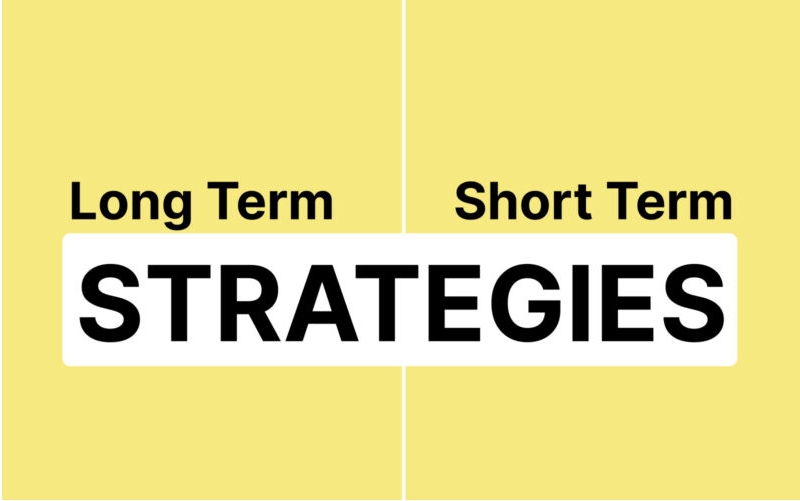Long-Term vs. Short-Term Investing Strategies
When it comes to investing, one of the first choices you’ll face is how long you plan to stay invested. Should you aim for quick gains in the short term, or focus on steady growth over the long haul?
Both long-term and short-term investing strategies have their advantages and risks. Understanding the difference between the two can help you align your investments with your financial goals, risk tolerance, and lifestyle.
In this post, we’ll break down what each strategy involves, the pros and cons, and how to choose the approach that’s right for you.
🕒 What Is Short-Term Investing?
Short-term investing involves buying and holding assets for a brief period—usually less than a year—with the goal of earning quick profits.
Common Short-Term Investments:
-
Day trading or swing trading stocks
-
Cryptocurrency trades
-
Forex (foreign exchange) trading
-
Short-term bonds or treasury bills
-
Money market accounts
-
High-yield savings accounts
✅ Pros of Short-Term Investing
-
Quick Returns: Potential to make profits in days, weeks, or months.
-
Liquidity: Easier access to your money if needed.
-
Flexibility: You can adjust strategies rapidly in response to market changes.
❌ Cons of Short-Term Investing
-
Higher Risk: Markets can be volatile in the short term, increasing the chance of losses.
-
Requires Time & Skill: You need to actively monitor markets, trends, and news.
-
Higher Taxes: Gains from short-term investments are often taxed at a higher rate.
-
Emotional Pressure: Quick decisions and constant market watching can be stressful.
📆 What Is Long-Term Investing?
Long-term investing means buying and holding investments for several years—or even decades. The goal is to build wealth over time through compounding, reinvested earnings, and capital appreciation.
Common Long-Term Investments:
-
Stocks or ETFs held for many years
-
Index funds
-
Real estate
-
Retirement accounts (e.g., 401(k), IRA, RSA)
-
Mutual funds
✅ Pros of Long-Term Investing
-
Compounding Growth: The longer your money stays invested, the more it can grow.
-
Lower Stress: Less need to monitor markets daily.
-
Tax Benefits: Long-term capital gains are usually taxed at lower rates.
-
Time to Recover: Your investments have more time to bounce back from market downturns.
❌ Cons of Long-Term Investing
-
Requires Patience: You won’t see immediate returns.
-
Less Liquidity: Your money is tied up for longer periods.
-
Market Crashes Still Hurt: Long-term investors are not immune to downturns.
-
Slow Progress: It can feel discouraging when growth seems slow early on.
🔍 Side-by-Side Comparison
| Feature | Short-Term Investing | Long-Term Investing |
|---|---|---|
| Investment Horizon | Less than 1 year | Several years to decades |
| Goal | Quick profits | Wealth accumulation |
| Risk Level | High | Lower (with diversification) |
| Time Commitment | High (active involvement) | Low to medium |
| Tax Efficiency | Lower | Higher |
| Suitable For | Traders, risk-takers | Retirement, long-term savers |
🧠 Which Strategy Is Right for You?
Here are a few questions to help guide your decision:
-
What is your goal?
-
Saving for a house in 6 months? Consider short-term.
-
Planning for retirement in 20 years? Go long-term.
-
-
How much risk can you handle?
-
Comfortable with big swings? Short-term might work.
-
Prefer steady growth? Stick with long-term.
-
-
How involved do you want to be?
-
Love watching markets daily? Short-term trading could fit.
-
Want a “set-it-and-forget-it” approach? Go long-term.
-
-
How soon will you need the money?
-
Short-term needs require liquid and stable investments.
-
Long-term goals can ride out market ups and downs.
-
💡 Bonus Tip: Why Not Both?
You don’t have to pick just one strategy. Many successful investors use a hybrid approach, for example:
-
Invest 80% for the long term (retirement, wealth building)
-
Use 20% for short-term opportunities (side income, trading)
This way, you stay on track with long-term goals while exploring short-term gains with a smaller portion of your capital.
🏁 Final Thoughts
There’s no one-size-fits-all approach to investing. The best strategy is the one that fits your personal goals, time horizon, and risk tolerance. Whether you go short, long, or somewhere in between, staying informed and disciplined is the real key to success.


